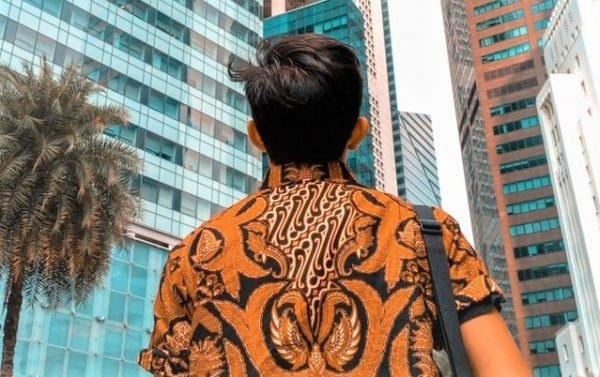Batik is an ancient art form that uses wax and dye to create colorful patterns on textiles. Originally from Indonesia and Malaysia, batik has become popular worldwide for its beautiful and symbolic designs. In particular, batik shirts offer a comfortable way to wear this artistic tradition. Join me on a journey through the history, techniques, and modern styles of batik shirts.
A History Woven in Wax
The origins of batik can be traced back over 2,000 years ago to Egypt and Asia. But the intricate wax-resist dyeing technique we know today developed most distinctively on the island of Java, Indonesia during the 17th century. Royalty and high-caste groups wore batik sarongs and shirts for sacred ceremonies.
- Certain motifs held profound spiritual meaning or cultural status
- Batik skills passed down generations as a well-guarded treasure
- Trade expanded batik techniques to Malaysia, Singapore, Thailand
By the late 1800s, batik grew as cottage industry. Common folk handmade shirts and sarongs for trade outside royal courts. Batik’s popularity boomed again following independence in Indonesia around 1945. It became a source of national pride and identity.
Today batik remains ingrained in Indonesian and Malaysian life for its rich heritage. At once art and craft, batik continues evolving across Southeast Asia and world fashion.
The Wax Art of Batik Technique
What makes batik Singapore Shirt so special is its dye-resistant wax process. Let’s explore the basic steps artisans use to create intricate batik prints.
- Drawing Outlines: Artists first lightly draw a pattern in pencil on the stretched and pre-washed cotton fabric. The outlines act as guides for applying hot wax.
- Waxing Designs: Using a copper wax pen called a canting, melted wax is carefully applied along the pencil outlines. The canting acts like a writing tool to trace intricate details.
- Adding Colors: After areas to “preserve” are covered with designs in wax, fabrics are dipped into the first dye baths. Where wax seals the fabric, colors don’t penetrate.
- Where wax seals the fabric, colors don’t penetrate.
- Removing Wax: Once an area achieves the desired hue, leftover wax gets scraped off and more colors are added by repeating dyeing and waxing steps.
- It’s amazing how each layer reveals new shades and patterns!
- Last Touches: Finally additional details like dots and lines get brushed on by hand before a last dip in darker colors to make outlines crisp.
It can take weeks or even months to finish an intricate batik artwork! The patience and dedication of generations past and present is embodied in each batik piece.
Contemporary Batik Shirt Styles
From traditional tunics to modern streetwear, batik techniques bring new life to shirts across cultures today:
Indonesian & Malaysian Tunics
- Long-sleeved button down tunics known as “baju kebaya” remain popular traditional wear
- Light and airy with decorative batik print accents along hemlines and sleeves
- Paired with batik sarongs or pants for formal events or daily wear
Bold Street Fashion
- Batik artwork makes eye-catching centers of t-shirts, tanks, and hoodies
- Urban street style often features abstract batik prints in bright pops of color
- Combines traditional handicraft methods with modern fashion silhouettes
Minimalist Chic
- Sophisticated workplace looks highlight soft batik patterns as accents
- Simple A-line dresses or tailored button-ups let subtle batik shine
- Perfect for incorporating heritage and creativity into a professional wardrobe
Customized Souvenirs
- Visitors can purchase white garments from local vendors to hand-batik as souvenirs and mementos
- From shirts to bandanas, batik your own wearable artworks!
- A memorable way to participate firsthand in ancient traditions
However, you style it, batik artwork adds colorful storytelling flair with a personal touch.
Carrying on the Batik Legacy
Over thousands of years, batik has journeyed across lands and cultures while retaining its iconic motifs and dyeing methods. For locals, batik shirts represent generations of tradition embodied in every wax line and fabric fold.
Batik’s growing worldwide fame proves its abilities to adapt as well. Fashion houses like Dior and Louis Vuitton have showcased batik catwalk creations alongside new Indonesian and Malaysian designers. Yet small family workshops still craft batik masterpieces too.
In an ever-changing world, the unwavering spirit of batik persists in keeping communities connected to culture and environment. Through wax, fabric and human hands, traditional foundations carry on alongside modern interpretations.

